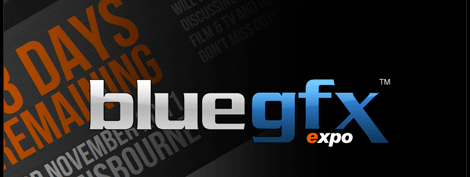
Bluegfx, resellers for all things visualisation-related, expanded its usual annual get together into a rather interesting event that drew in some of the Capital’s best Fakers.
‘Fakers’ is the term I’m going to apply to all the people working with 3D design to build scenes, scenarios and models so realistic you’d slap anyone that told you otherwise. Attendees were from all media, including film, TV, games and architecture, as well as a handful of industrial designers charged with bringing products to life.
Taking place at Ravensbourne (formerly Ravensbourne College, but now so technically advanced that it has dropped the ‘College’), opposite the O2 Dome (formerly the Millennium Dome, but now so injected with corporate sponsorship that it has dropped its morals), some of Bluegfx’s key partners populated a small exhibition space between talks from some of the biggest names in visual arts.
Once Autodesk had hawked its wears down the front of the main presentation room, we shuffled into the group in which Chaos Group showcased V-Ray 2.0 and some nifty workflows.
With the theme for the event being more about animation and modelling, it was a relief to see Mike Owen from Burrows on stage as part of the following panel discussion. He was flanked by Steve MacPherson (the only man known to have headed the three big London film viz offices), CTO of Framestore, and Gavin Graham, head of 3D at Double Negative, another special effects whizz freshly available to talk about the work his team did on the film Captain America: The First Avenger.
Most of the discussion flowed around cinematic issues, although several similar points cropped up: the problems with having too much data, and the need to delete it as it kept on growing during a project; security issues; how to comply with customer storage requirements; having to ‘educate’ the customer and so on.
It was pretty clear that with Burrows having worked with prestige clients such as Ford for such a long time, Owen was clearly aware of the problems workflows can throw up: Need to give a model a quick facelift for an upcoming ad campaign? No-can-do; all model information has to be destroyed once Ford says so (more comforting is that they can at least charge for modelling the car from scratch once again).
The group sessions following lunch were once more divided – with DEVELOP3D sitting attentively throughout the talk from Saddington Baynes CEO Chris Christodoulou.
Having previously worked in the photographic touch-up industry, the firm quickly realised that 3D modelling and visualisation could bring a whole new world of possibilities for 2D media.
Beginning with modelling stock photos, so that they could be used more productively to blow up to billboard size, the world of photography is now struggling to keep up with the effects, images and entire new worlds Saddington Baynes can produce. Why have your luxury sports car photographed on – an admittedly stunning – Spanish vista, when you could enlist this team of ‘Fakers’ to create you an entire world of photorealistic views – one that a lowlier car maker can’t take its cars to and play off your aspirational brand image?
Some purely stunning visual creations for the likes of Intel (and entire arena, surroundings, furnishings, lighting) and Marlboro (a dynamic world of backgrounds, thick in brand language), were showcased with some syrupy car renderings for Honda – an area the company has long since mastered.
They were even keen to point out the diminishing role of the photographer – especially with the rise of firms demanding the creation of people to star in these virtual spaces (No ageing, no problems with haircuts, available on demand with no need for another photo shoot – saving time and reshoot costs).
Adding to the demise of the photographer’s assistant, HDR Light Studio was next to be given the run through. Now in version 3.0 (released early next year), this tool, for producing accurate lighting set-ups for your digital models quickly for first-time renders, was stumbled upon by many from the film and TV, many left wondering if it was possible to integrate it into their processes.
And so the afternoon continued, concluding the event with some of the movie fun from the Harry Potter films; a event that proved to be a strange blend of all the Fakers’ industries magic conjoining to show just what a hub of worldwide expertise London has in this field.






